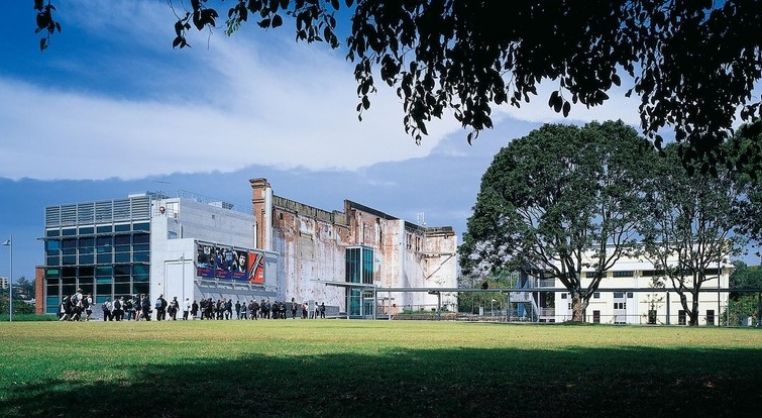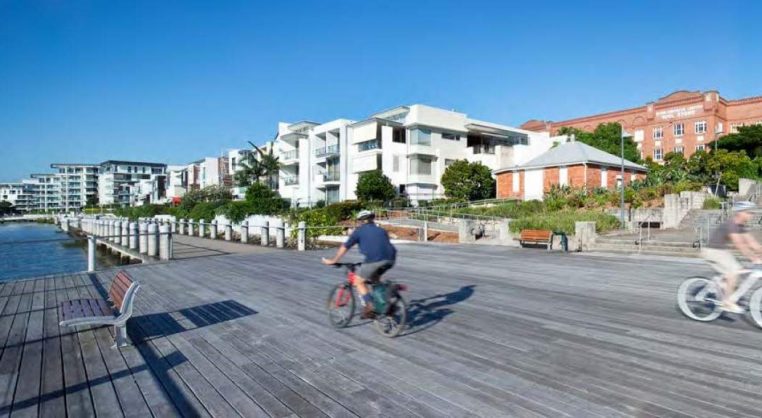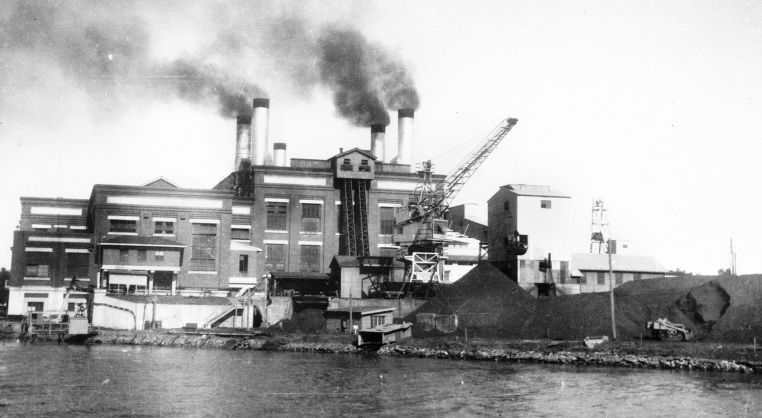The Brisbane suburbs of New Farm, Teneriffe and Newstead have been undergoing continual urban regeneration since 1991 when the Urban Renewal Taskforce was established to revitalize approximately 730 hectares of former industrial land in these and neighbouring suburbs.
In the intervening decades they have been transformed from obsolete post-industrial sites to busy contemporary environments. This involves the adaptive reuse of large urban areas as well as of the buildings, sites and precincts within.
The taskforce, later renamed Urban Renewal Brisbane (URB), focusses on urban consolidation while seeking to respond to the history, heritage and character of the former industrial suburbs. It fosters regeneration through developing strategies and planning frameworks, and through community consultation, demonstration projects and communication programs.
Over the years URB’s mandate has expanded to include growth corridors and major centres within the Brisbane’s inner five-kilometre ring.
Download a printable version of the New Farm, Teneriffe and Newstead case study (PDF 1.2 MB).
Site history and heritage
Newstead, Teneriffe and New Farm are adjacent areas fronting the Brisbane River north-east of the CBD. They played significant roles in the industrial life of Brisbane from the mid-nineteenth century onwards, with much of the activity clustered around the river which was an important transport corridor.
Concentrated industrial development of the river’s edge began in the late nineteenth century. Brisbane Gas Company’s gasworks opened in 1887 with the Colonial Sugar Refinery constructed in 1893. These were followed by timber yards, coal yards and wool stores. By the early twentieth century the Teneriffe river edge had commercial wharves and many wool stores.
The New Farm Power House was built between 1928 and 1940. Workers’ housing developed within walking distance of the industrial facilities. A railway from Bowen Hills connected the wharves, the gasworks and the New Farm Power House. By 1990 when the railway closed most of the industrial sites and riverfront were neglected.
Many of the industrial buildings and sites in the area are listed on the Queensland Heritage Register. These include the Colonial Sugar Refining Company Refinery, the Newstead Gasworks No. 2 gasholder, the Newstead Air Raid Shelter, the Monier Ventilation Shaft 3, and nine different wool stores.
Opportunities
The dilapidated areas were seen as an opportunity to “create sustainable livework communities in the inner city, revive local economies, deliver affordable housing and reverse the exodus of residents and businesses.”
The tri-govermental partnership under which the URB was founded allowed it to pursue an integrated approach to urban regeneration. The wharves and river’s edge were seen as an opportunity to establish a riverfront promenade, new waterfront parks, and public spaces and facilities.
Vacant warehouses and other industrial buildings were seen as opportunities for medium-density housing developments.
Challenges
When the renewal project began Brisbane was “struggling with economic stagnation, urban decay and crime”. Residents and businesses were leaving the city for the suburban fringe. The river was polluted having been used a conduit for industry for a century. Many sites were also contaminated.
Approach and outcome
The URB aims for urban regeneration through a “compatible mix” of residential, commercial, industrial and recreational uses. It prepares masterplans, delivers infrastructure and catalyst projects, facilitates development partners with developers. It also researches development economics.
The masterplans are used to define urban form, with an emphasis on the street interface, and are described as “flexible to ensure developability, but robust enough to ensure positive outcomes for the community.”
The Newstead and Teneriffe Master Plan was the first plan completed by the URB, with the 1995 conversion of a Teneriffe wool store into apartments being the first built project. By 2000 most of the waterfront woolstores had been converted to residential use. Other sites redeveloped as apartments and housing included the Australian Maritime Depot, HMAS Moreton, factory sites including the State Cannery, and a cathedral. The Brisbane Powerhouse was redeveloped as a performing arts centre in 2000 by City Design, Brisbane City Council, in association with Cox Rayner and Allom Lovell. In contrast to the “cleaned up” residential reuses, this left much of the fabric ‘as is”, complete with graffiti and other marks that tell of its long history.
A current project, Gasworks and Newstead Riverpark, will see the 17-hectare site reused for a mixed-use development that includes residential, retail and commercial uses. The heritage-listed 1887 gasometer frame will be the “focal point of a public piazza”.
Affordable housing is part of the URB program, however, Newstead, Teneriffe and New Farm are now some of Brisbane’s most expensive suburbs.
The built projects are of mixed quality, and some are more successful in terms of retaining and respecting industrial heritage than others. However, the overall urban impact is significant and has retained some of the industrial character of these suburbs even as the uses and socioeconomic contexts have changed dramatically.
The urban work is widely recognised and now informs the development of other disused industrial precincts.
Lessons
- Disused industrial sites and landscape are an important focus for urban renewal.
- Urban renewal takes time, political commitment and an intergrated approach.
- Demonstration projects play a key role in generating change while maintaining heritage values.
- Active, ongoing engagement with both the community and the development sector is crucial.
- Investment in high quality public spaces can provide an affordable and visible catalyst for heritage- led urban regeneration.
Project team
Urban Renewal Brisbane.




